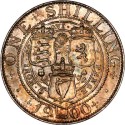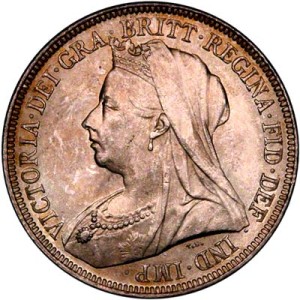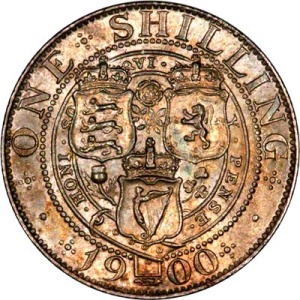A Scion Society of The Baker Street Irregulars

More Mysterious Money Matters
“Three bob and a tanner for tickets.”
– The Sign of The Four (SIGN)


In response to our previous discourse concerning the intricacies of Victorian currency (“So, how much is a Quid, a Crown, and a Bob?; The Sherlockian Times: Fall 1993) we received a welcomed epistle from that most erudite Northern Musgraver Mr. John Hall (author of the recently published Canonical chronology I Remember the Date Very Well). Mr. Hall honored us with some very interesting additional information concerning the language associated with the use of coinage and currency during Victorian times. With his permission we would like to share his most interesting exposition with you.
The halfpenny (1/2d), sometimes, but infrequently, called a “meg,” was commonly known as “(h)ape knee” with the aspirate (the “h”) being stressed or omitted at the speaker’s discretion. Mr. Hall noted that the omission or stressing of the aspirate was not conclusive proof of the social class or educational background of the speaker as is often taken for granted, but might vary as a function of a number of other consequences such as geographical origin of the speaker. This pronunciation was used in compounds, i.e., 4 1/2d = fourpence (h)ape knee, etc., except in the case of 1 1/2d which would equal three half pence, would have commonly come out “three (h)ay pence” although, Mr. Hall commented, one might some- times have heard “penny (h)ape knee.” 2d was pronounced “tuppence” and 3d “thruppence” with the 3d coin sometimes called a “threepenny bit.”
The sixpenny coin was called a “bender” or more commonly a “tanner.” Interestingly enough, we were recently listening to one of the old Rathbone/Bruce Sherlock Holmes radio programs entitled ” The Case of the Living Doll” (originally broadcast on 3/11/1946) in which a dying victim had only enough strength to sift through a stack of coins and hand Mr. Holmes a silver sixpence before she died. Mr. Holmes induced that her act identified her murderer as being a suspect named Hugh Tanner because of the association of the coin denomination with the slang expression “a tanner.” We are also told that a sixpence might be called “a kick” when referred to in combination with other denominations, e.g., 1/6 might be referred to “one and a kick” or, more likely, as “one and a bender” or “one and a tanner.”
The shilling (one twentieth of a pound; 12 pence, 1/- ) was commonly called a “bob.” According to Mr. Hall, “bob” was never pluralized, i.e., 2/- = two “bob” (not two bobs), 7/- = seven “bob,” etc. In common compounds noun references to either the shilling or the sixpence might be eliminated altogether, for example, 3/6, precisely and formally “three shillings and sixpence” might be called “three and sixpence,” or more commonly simply “three and six” with the denominations of “shilling” and “pence” understood. In light of this common usage, Mr. Hall indicated that the, “Three bob and a tanner for tickets,” requested by Wiggins in SIGN would have been an unusual way of referring to that amount of money, especially for a lad of the Victorian streets.
Apparently the only glaring error we made was to refer to five shillings as “a crown,” (an error apparently shared by Jack Tracy). Mr. Hall advised us that even though 2/6 (two shillings plus sixpence) was referred to as “half a crown,” five shillings (twice “two and six”) was, to quote him directly, ” … never, EVER … ” called “a crown;” a condition which might seem a little odd to the American mind hence, Mr. Hall’s most welcomed caveat to American pastiche writers not to have their Victorian characters say things like, “I handed the cabby a crown.” Instead, 5/- would properly have been called “five shillings,” perhaps “five bob,” or even, on occasion, “a dollar” (see CARD, HOUN, and TWIS).
The pound (£1 which was 20 shillings) was also known as a “sovereign,” commonly abbreviated to “sov,” and familiarly known as a “quid” or, less commonly, a “nicker.” These references to the pound are also never used in the plural, i.e., £2 = two quid; £4 = four quid (not liquids”).
We do thank Mr. Hall very much for his contribution to our understanding of how people talked about the British currency system during Mr. Holmes’ time; [but we do have a little difficulty in agreeing with his final summary comment about the system. He called it, “Absurdly simple!”]
This post was originally published in the Spring/Summer 1994 issue of The Sherlockian Times and was later reprinted in The Formidable Scrap-Book of Baker Street, edited by Carolyn & Joel Senter.

[…] Sherlockian friend, Len Haffenden, kindly took the time to comment on the articles which we ran in previous issues of The Sherlockian Times about British monies. Mr. Haffenden, […]
[…] “florin”, but only for a short time. John Hall, referring to the “crown” (Spring/Summer 1994 issue) may well be correct in stating that five shillings was never referred to as a “crown”. […]
[…] recently reprinted the article More Mysterious Money Matters by John Hall. That article refers to the March 11, 1946 Mutual Broadcasting System’s […]